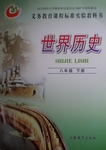题目内容
根据短文内容,从短文后的选项中选出能填入空白处的最佳选项。选项中有两项为多余选项。
Culture means any human behavior that is learned in human society. All of the meaningful parts of a culture are passed on to different generations through tradition or social learning.1. Culture exists in agricultural as well as industrialized societies.
Culture is necessary for the survival and existence of human beings. Practically everything humans know, think, value, feel, and do is learned through taking part in a sociocultural system. 2. Here is one of the cases of children growing up apart from human society. In the province of Midnapore in India, the director of a children’s home was told by local villagers that there were “ghost” in the forest. Upon looking into the case, the director found that two children, one about eight years old and the other about six years old, appeared to have been living with a pack of wolves in the forest.3. In his diary, the director describes his first view of Kamala (as the older child was named) and Amala (the name given to the younger child):
Kamala was a terrible-looking being, the head, a big ball of something covering the shoulders. 4.Their eyes were bright and sharp, unlike human eyes. They were very fond of raw meat and raw milk. Gradually, as they got stronger, they began going on all fours, and afterwards began to run on all fours, just like squirrels.
Children learn human language in the same way they learn other kinds of human behavior — by taking part in a cultural community.5.
A. Culture refers only to the high art and classical music of a particular society.
B. This statement is well supported by some well-written cases.
C. Close at its heels there came another terrible creature exactly like the first, but smaller in size.
D. From this viewpoint, all human groups have a culture.
E. These children were the ghosts described by the local people.
F. They learn a certain human language as well as certain kinds of human behavior through their membership in a certain cultural community.
G. Human beings can only develop human abilities by the local people.
 探究与巩固河南科学技术出版社系列答案
探究与巩固河南科学技术出版社系列答案
